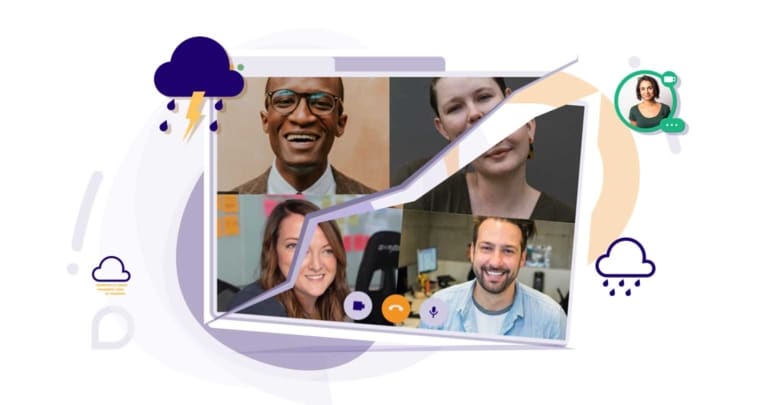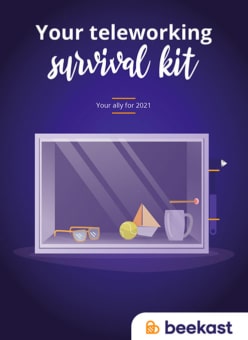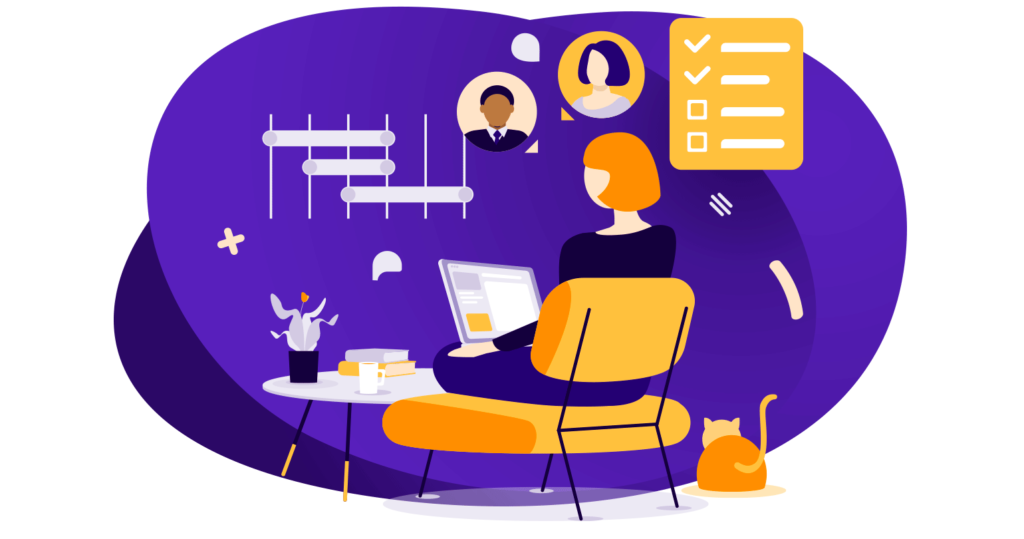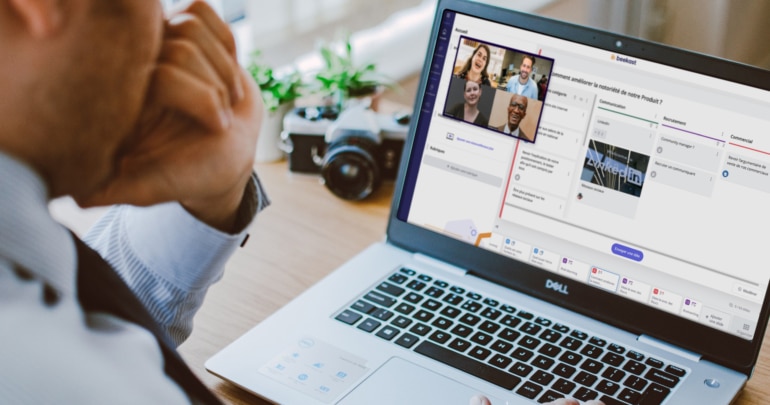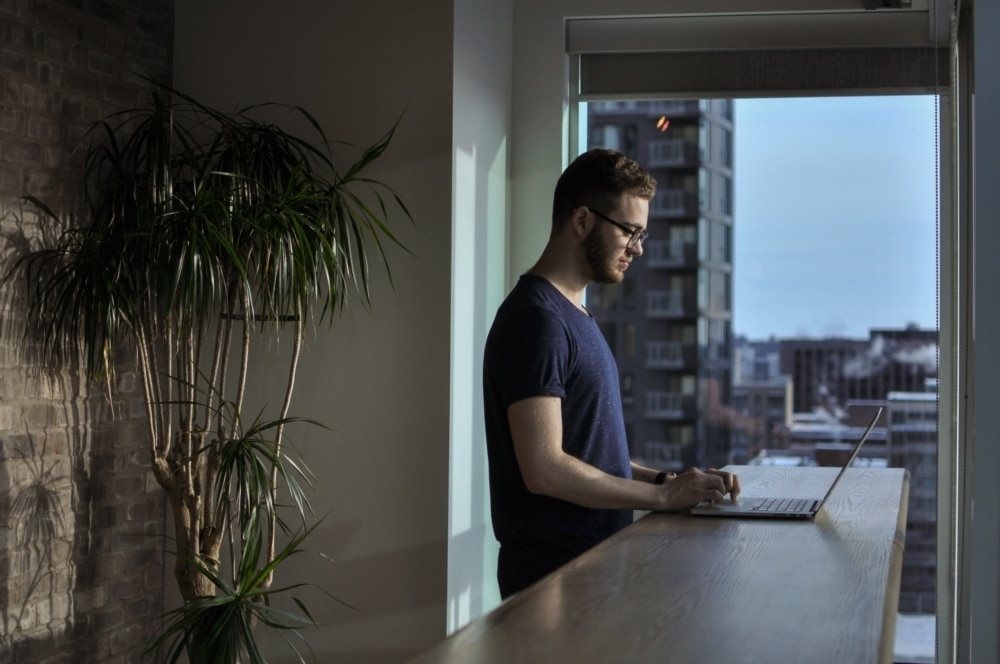Remote team meetings, webinars, virtual pre-dinner drinks… Videoconferencing has taken over our everyday lives for the past year. Initially seen as a breath of fresh air amidst the lockdowns, these calls soon became tiring for many, particularly for those whose jobs meant they quickly stacked up.
Head of Innovation for the Manitou group, Régis Marzin experienced this at the start of the pandemic. Leading a group of 5 employees, Régis switched to 100% teleworking and turned to video calls, which weren’t entirely new to him.
“For a while previously, Manitou employees who wanted to were free to work from home for one day a week. So we already had all the digital tools: group chats, videoconferencing, shared folders and so on, explains Régis. It wasn’t ‘brand new’ for us, but we didn’t have many remote meetings before the COVID-19 pandemic.”

A massive loss of information
“When I use it to share things with someone who is already operational in the field, who is an expert in their role, the channel works well.”
Fast-forward to March 2020: The manager often resorted to videoconferencing, with mixed feelings… “While it was an essential tool to maintain communication in the team, video calls caused a massive loss of information, he says. When I use it to share things with someone who is already operational in the field, who is an expert in their role, the channel works well.”
But it’s a different matter when it comes to sharing knowledge with new arrivals, interns or those on work/study training programmes. “Since they can’t yet work independently, they need informal time to ask questions, understand how a machine works or find a certain document.”
Videoconferencing isn’t really tailored to these cases, putting Régis in a difficult position when it comes to support. “To manage my team and make progress on cross-cutting projects, I need direct contact. But that wasn’t possible during the first lockdown – I felt like I was stuck to my chair and was just going from one video call to another”, he recalls.
The need for feedback
“Without those face-to-face conversations, you discuss your project a little less with your colleague, you’re less responsive to their ideas… Everything becomes compartmentalised and you’re entirely focused on operational efficacy.”
That was when he felt their team spirit breaking down. “Without those face-to-face conversations, you discuss your project a little less with your colleague, you’re less responsive to their ideas… Everything becomes compartmentalised and you’re entirely focused on operational efficacy. It was really frustrating – I sometimes felt like I wasn’t doing my job as a manager as well.”
Régis decided to look for other options. As well as setting up new traditions with his team such as “virtual pre-dinner drinks” every Friday, he’s changing the way he uses these calls and wants more feedback. “At the start of the pandemic, managers were giving presentations alone in front of their screens, without getting reactions from participants since their webcams were switched off. But this approach wasn’t in line with our culture, he recounts. In my team, everyone speaks pretty spontaneously: in our open space we were used to sharing our ideas, communicating a lot…”
To get this interaction back, the manager introduced more collaborative tools, and everyone has their camera on during calls. He also makes sure he regularly calls each team member, and encourages them to do the same with him.
Régis’s “anti-fatigue” tactics
“I’d use the handsfree kit for my phone at times, to take calls in my garden…”
Increasing interactions without increasing fatigue. Employees working from home have also had to find the right balance to combat the risk of “Zoom fatigue”, a new phenomenon brought into focus by Stanford University. Neuroscientists have proven that video calls require increased concentration from our brains, particularly because we see fewer non-verbal signs, such as someone’s gestures and posture.
Régis was no different. Feeling tired earlier in the day with headaches and trouble sleeping, the manager had to find his own “anti-fatigue” tactics. Including creating a new work schedule: “I alternated between calls in front of the computer and short breaks – I’d stop working around 5 p.m. and go for a walk or run, then get back to work, he explains. To break out of the sedentary lifestyle – previously I would move around the site a lot – I also made sure I wasn’t staying still at home by regularly working in different rooms. I’d also use the handsfree kit for my phone at times, to take calls in my garden…”
All these methods help him stay well, both physically and mentally. Which is essential when you’re a manager…
Ideas to try
To limit the effects of the “Zoom fatigue” phenomenon, here are 6 best practices that you can use without moderation:
- 1) Take visual breaks: every 20 minutes look away from your screen and stare at a point in the distance
- 2) Shorten meeting durations
- 3) Set common rules: have cameras on or off, raise your hand if you want to speak, only use the chat function, etc.
- 4) Use channels other than video calls where possible
- 5) Learn how your body works (body clock, sources of fatigue, etc.)
- 6) Change how you use video calls and add in a little interaction (collaborative workshops in sub-groups, more traditional presentations, etc.) to break away from the top-down approach
Why not create your next videoconference with Beekast for more efficiency and interaction?
